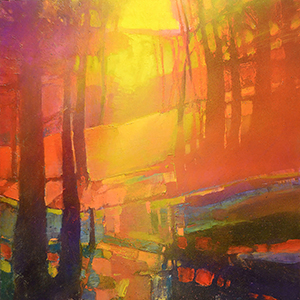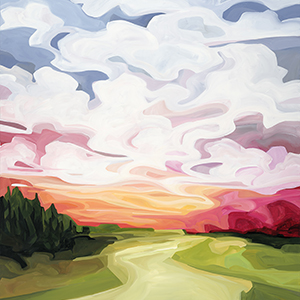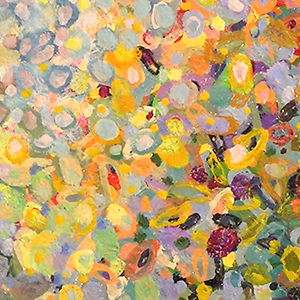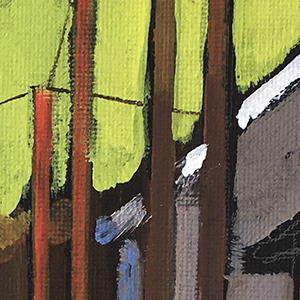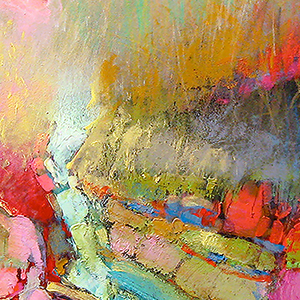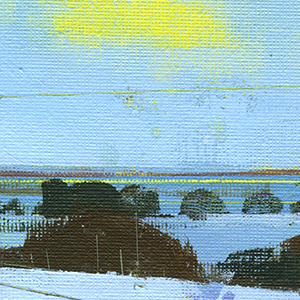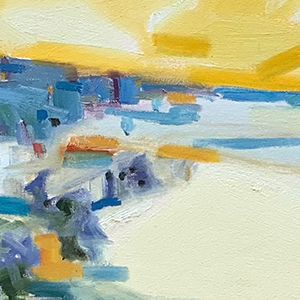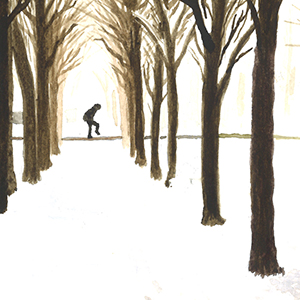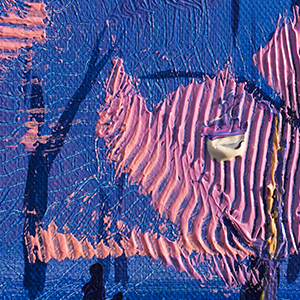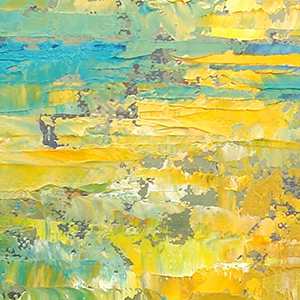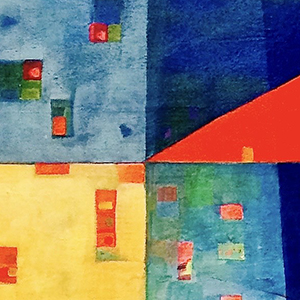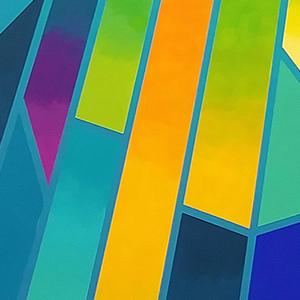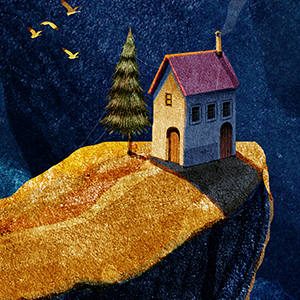Two decades ago, when my wife, Leah, and I moved to Durham, North Carolina’s Walltown neighborhood, we were young Christian activists who were determined to interrupt the violence of this world’s systems. In the spring of 2003, we had joined the Christian Peace Teams in Baghdad, Iraq during our nation’s “shock and awe” campaign to overthrow Sadaam Hussein’s government. We did not know a way to stop an illegal and unjust war that was being waged in our name, but we were moved by the witness of fellow Christians who insisted that we could put our lives on the line to be with the people who were suffering from our country’s bombs. This, it seemed to us, was Christian hope. “Those who hope in Christ can no longer put up with reality as it is but begin to suffer under it, to contradict it,” the German theologian Jürgen Moltmann wrote. “Peace with God means conflict with the world, for the goad of the promised future stabs inexorably into the flesh of every unfulfilled present.”
The promised future of a peaceable kingdom goaded us into a war zone, and in the midst of it we experienced a miracle. On the highway that runs through the Anbar province of Western Iraq, one car in our team’s caravan crashed into a ditch outside of a town called Rutba. In the middle of a desert, and in the middle of a war, they stumbled back up to the roadside bleeding and unsure what to do. We had come to be with people who were suffering; now, we were suffering with them. When a passing car of Iraqis stopped, they took our friends into their vehicle and drove them into town where they found a doctor who said to them in English, “Three days ago your country bombed our hospital. But we will take care of you.” He sewed up their wounds and saved their lives.
When the car I was traveling in turned around and found our friends, I asked this doctor what we owed him for his services. “You do not owe us anything,” he said. “Please just go home and tell people what’s really happening here.” When we did, I found myself telling a 21st-century version of the Good Samaritan story that Jesus tells in Luke’s gospel. The people who were supposed to be our enemy had stopped by the roadside, picked up our friends, and made sure they were taken care of. At the end of Jesus’ version of this story, he says, “Go and do likewise.” We felt like he was talking to us. We came home to an historically Black, low-income neighborhood in our own country and started a hospitality house to try to love our neighbors as we had been loved. To remember the miracle we’d experienced, we called the place Rutba House.
In those early years, when we were strange white folks inviting neighbors we didn’t know to come join us for dinner, a lot of people kept their distance. But kids were always game for a meal and a soccer match in the parking lot after dinner. For a couple of years, Leah ran an afterschool program in the neighborhood, getting to know families through their kids and learning how much folks were up against as they often worked two and three jobs to keep their children housed, clothed, and fed. Hope, it seemed to us, was parents working against all odds to make opportunities possible for their children. We wanted to invite others to share their hope, so we started a wrap-around program for kids when they got to middle school to invest all that we could in their future. Walltown, we knew, wasn’t going to change tomorrow. But we had hope that kids we knew and loved could interrupt the neighborhood-to-prison pipeline that had taken so many of their family members from them. Hope didn’t just mean suffering injustice with folks to insist that things didn’t have to be this way. It also meant investing in a better future—and inviting other people to join us in that.
We’ve been here long enough now that we’ve had the chance to watch those kids grow up. We’ve watched some of their hopes and ours become real, and we have felt what it’s like for hope to be crushed, sometimes before it even had a chance to come into full bloom. In the midst of the pandemic lockdown, when people around here weren’t meeting in-person for anything, a young man we’d met at the bus stop his first day of kindergarten—a kid who was in the first cohort of that program we started for middle schoolers—was gunned down in the street at 23 years-old. We had his funeral outside in the graveyard and stood socially distanced from one another until the funeral directors had committed his body to the ground. As we were leaving, I spotted the other guys from his group standing together. One of them had flown back from the Ivy League school where he was finishing his undergraduate degree. Another one, last I had heard, was homeless. Here they were, together, for a reunion no one had planned, facing a reality no one had hoped for.
You cannot live and hold onto hope in a place like this without recognizing that the challenges we face are bigger than the choices people make and the opportunities available to them. No one who hoped and prayed with that group of kids through their teen years could have told you who would end up living in a dorm with the children of corporate executives and who would end up living in the woods. But any social scientist can tell you that one in three Black men who grew up in America in their generation will end up living inside a prison at some point in his life. They can tell you that every one of them is more likely to die from gun violence in their 20s than from any other potential cause of death. And they can also tell you that these are not inevitable circumstances but rather the result of policy choices that have been made in statehouses and in the US Congress. We know what could be done to change these statistics, but our representatives will not act to curb gun violence, fight poverty, or end mass incarceration.
Where, then, do we turn for hope? Extraordinary efforts to interrupt broken systems for particular kids can make a huge difference—but not always. Movements for social change can compel politicians to do even what they do not want to do—but it takes a lot of effort and, usually, a really long time. So, what to do?
I’ve been turning to the 19th century abolitionists lately, re-reading their words and trying to imagine what they would say to us in this moment. Slavery, they knew, was wrong, so they took direct action to interrupt it. They built an underground railroad—often at risk of their own life and liberty—and they got everybody out they could. But they knew they’d never get everyone out, and they knew from personal experience that, when you crossed the Mason Dixon line, survival entailed a whole new set of challenges. Even still, they held onto hope by doing everything they could to help the person in front of them toward freedom.
But that wasn’t all. Yes, hope meant investing whatever resources you had to help enslaved people get free. But it also meant building a movement to change the laws that said some people could own other people. This was a long-term movement that lasted decades and sometimes even seemed to be counter-productive. When the Supreme Court issued its Dred Scott decision, saying that no Black person in America had any right that white people were bound to respect, it appeared to some as if the struggle for abolition had, in fact, damned all free people of African descent in America. But Frederick Douglass, who had long since learned what it meant to hope against hope, argued that such an extreme decision from the high court should actually encourage the abolitionist movement. It was but a necessary step in the chain of events that would lead to the downfall of the entire wicked system.
Where does that sort of hope come from? It is not unique to the abolitionists. In one way or another, it’s the virtue that has moved suffering people to work together for change throughout human history. If you don’t have the guns or the money or the computer with all the data, what are you to do in a world where people who have power will use it to benefit themselves and use or abuse other people? It is, it seems to me, a deeply human dilemma. Christianity claims that, in the face of such an impossible situation, we have but one hope: that the Maker of all things who knows better than any of us how the world really works has shown up in the person of Jesus and demonstrated the way to freedom. The trouble, though, is that most people who call themselves Christian aren’t very much impressed with the way that Jesus offers.
Mahatma Gandhi happened to be traveling on a British ship one Christmas, after he had already become famous for his nonviolent campaigns in India. His fellow travelers asked if he would be willing to give a Christmas message. Gandhi was not a Christian, but he had learned a lot from Jesus by way of Leo Tolstoy’s writings and the Sermon on the Mount from Matthew’s gospel. So he agreed to preach the Christmas message, and he delivered it in two sentences: “Living Christ means a living cross. Without it life is a living death.”
To live the way of Jesus in the world is, as Moltmann says and Gandhi well understood, to embrace a way of suffering alongside all who live with their backs against the wall. There is nothing inherently redemptive about suffering itself. Injustice is evil, and it is sustained by the banality of our easy acceptance that the way things are is the way things have to be. But the way of Jesus isn’t just suffering; it is a “living cross.” When we choose to live in the face of evil with the confidence that life is stronger than death, we can live in the power that created the universe—the love that moves the sun and other stars. Our hope isn’t that we have the power to change anyone or any system, but rather than we can live here and now in the way of truth.
Will this kind of hope change anything? Looking back, we can say it has. This is the hope that ended slavery, that gave us a labor movement, that fueled the civil rights movement, and that sustains today’s climate activists. But we also have to confess that it hasn’t. Many hoped for freedom they never experienced in this life; a young man whose hope I shared for years lies buried in a graveyard just a few miles from my home. If we are honest about hope, we must confess that it does not promise any particular set of results that we can predict on our schedules. But I’m convinced that Gandhi is right: without it life is a living death. The hope I know in the way of Jesus is a hope that sustains me in a beloved community that shows me what a life worth living looks like.







